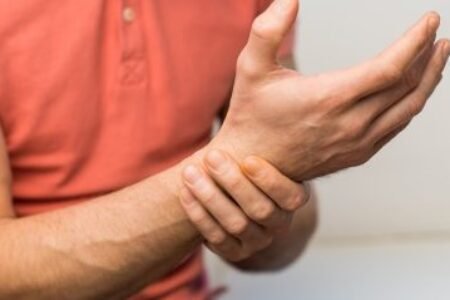Hand injuries and disorders are common and can involve a variety of conditions such as the skin, tendons, nerves, blood vessels, bones, and joints. Many injuries are resolved in a timely manner through physiotherapy and physiotherapy, but there are certain types that require surgical or pharmacological intervention, and then physiotherapy for rehabilitation. The following is a list of injuries that can affect the hand:
De Quervain’s Tenosynovitis
Trigger finger/thumb
Ganglion cysts
Carpal tunnel syndrome
Cuboid tunnel syndrome
Basal thumb arthritis
– Arthritis of the finger terminal
Dupuytren’s contracture
Boutonnière deformity
Extensor tendon injury
Flexor tendon injury
Hammer toe injury
– Tear of the extensor tendon of the thumb
Hand fractures
Finger dislocation
– Twisting of the fingers
Thumb sprain
Nerve injury
– Stiffness of the hand
Hand nerve suffocation
the definition
Peripheral nerves, particularly the nerves of the hand, are exposed to many stimuli that cause nerve suffocation. This problem affects housewives and is called hand nerve suffocation. What is meant by it is the median nerve that connects between the wrist and the palm of the hand. It often leads to nerve damage if the problem is not resolved in the end.
Causes of hand nerve suffocation
The main reason for hand nerve suffocation is injuries such as severe accidents, the most famous of which are motorcycle accidents that affect the hand, As well as increasing the wrong load on the nerve, which is one of the common causes for women due to the large number of manual work.
Symptoms and signs of hand nerve suffocation
Anesthesia of the area that the nerve reaches (fingers and palms).
Severe pain or burning pain in the nerve area.
Muscle weakness in the affected area.
Constant sense of numbness in the area to which the nerve reaches.
A tingling or tingling sensation in the affected area.
Treatment of hand nerve suffocation
Complete comfort: Where doctors recommend the need to stop any activities that cause pressure on the nerve.
pharmaceutical: The doctor prescribes analgesic medications to stop the pain and muscle relaxants. He also sometimes injects cortisone into the area of the injury or into the mouth.
Surgery: In the event that none of the previous methods succeed, surgery is resorted to in order to widen the path in which the nerve walks or to remove pressure from it.
– natural therapy: and that is done by
– Some strengthening exercises that increase the strength and lengthening of the affected muscles, which helps relieve pressure and symptoms.
Manual therapy to reduce muscle tension around the nerve
Move the nerve to reduce pressure on it
– Some devices such as lasers, shockwaves, sound waves, and electrical stimulation.
Hand Occupational Therapy:
The role of the occupational therapist is focused on providing therapeutic programs and activities with the aim of helping the person to carry out the normal functions of his hand before the injury, through treatment programs to improve the patient’s motor and sensory abilities, achieve coordination between the movement of the hand and restore its ability to carry out the tasks required of it, and prevent Injury side effects.
The occupational therapist at the Egyptian Center for Physiotherapy develops a therapeutic home training program for the patient to strengthen the joint and muscles to avoid any future injuries.
An occupational therapist also treats scars and their effects. It also provides the necessary splints to prevent deformities and contractures, Here, the Egyptian Center for Physiotherapy provides the latest types and techniques of splints.

